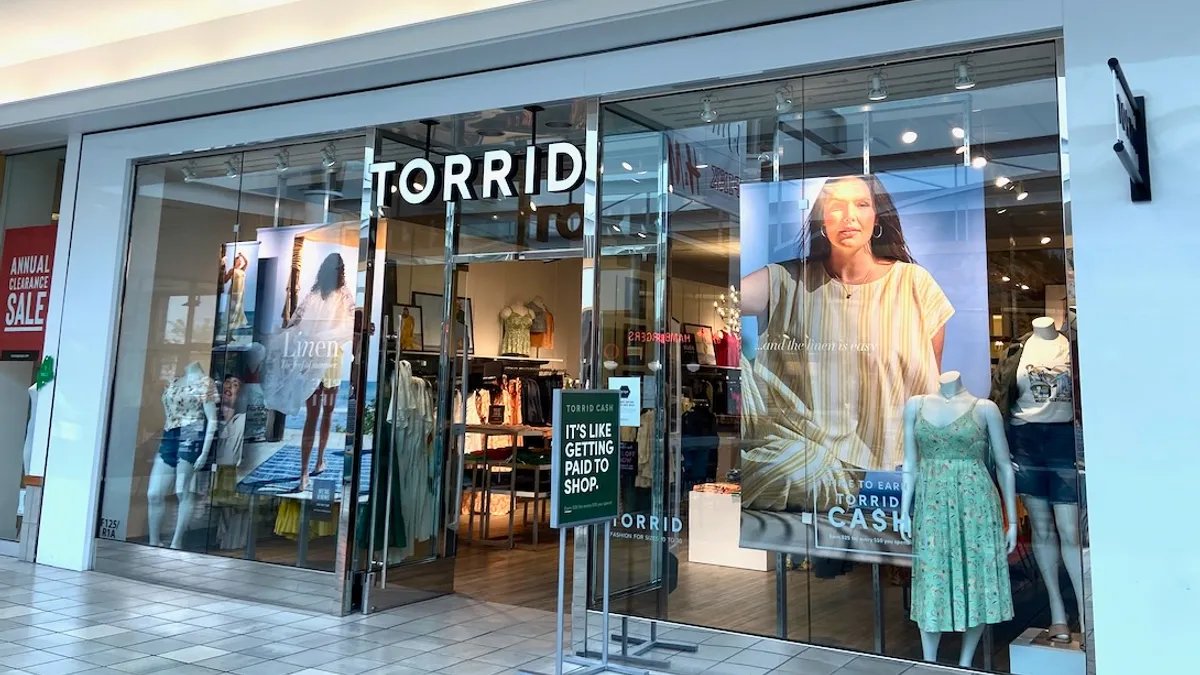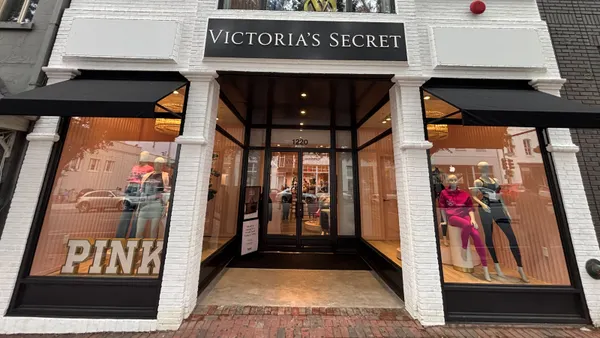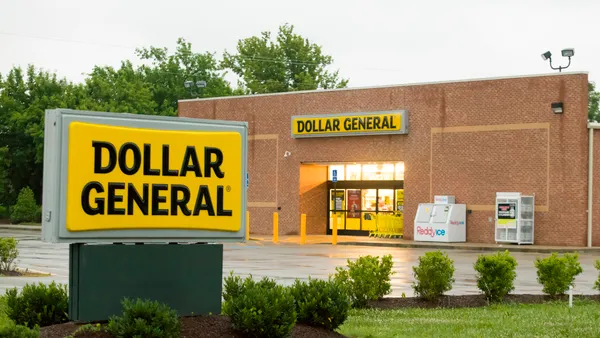For years, off-price chains have been luring shoppers out of department stores with prices up to 70% lower than traditional retail. And as department stores continue to experience declining foot traffic and slash store counts, off-price retail has begun to flourish.
Moody’s projects sector sales to rise between 6% and 8% this year, while operating income could grow at least 4%. Profit gains will likely be driven by increased top line sales, an expanding vendor base and more efficient supply chain operations, Christina Boni, vice president and senior analyst for Moody’s, told Retail Dive.
While entrants from traditional department stores like Macy’s and Kohl’s have recently emerged, four core players are expected to dominate the field: TJX Companies, Ross, Burlington and Nordstrom Rack.
This year, off-price chains are ramping up new store programs and digging deeper into beauty, home and gift categories, all while protecting their core apparel businesses. For now TJX remains the market leader, but experts say others are nipping at its heels.
TJX leads a growing sector
TJX, the only off-price retailer with a serious global presence, has laid out a long-term plan to operate 5,600 stores, up from its current total of 3,785, in countries where its banners already exist. For the U.S., the initiative calls for adding about 800 total T.J. Maxx and Marshalls stores. At the end of 2015, there were 1,156 T.J. Maxx and 1,007 Marshalls stores sprawled across 49 states. Last year, the retailer opened 37 new T.J. Maxx and 32 new Marshalls stores in the U.S. For its HomeGoods division, which has 568 stores, the company envisions an added 432 stores.
“TJX’s ascent has really been phenomenal in the last few years and they have become very effective across multiple banners,” said Michael Brown, a partner in the retail practice of A.T. Kearney, a global strategy and management consultant. “I see them remaining the leader, but with footprints being expanded from others.”
While TJX leads the off-price march, there's still room for more competition and stores — at least for now — Moody’s Boni said. “There is almost in every sector a point of saturation that is reached. The off-price sector has not reached that. But, it has continued to be monitored as companies add square footage,” she said, adding that physical stores are vital for the growth of off-price. “They don’t have a material online presence. It is a bricks and mortar play.”
TJX rival Burlington also has big plans to build out its store base. The retailer currently has 592 units and plans to expand to 1,000 by filling in white space in both existing and new markets. It opened 25 new stores in 2016 and will add another 30 units in 2017.
Ross Stores, which operates the Ross Dress for Less and dd’s Discount chains, added a combined 84 locations in 2016, and will stay on pace in 2017, adding another 80 to 90. At present there are 1,338 Dress for Less locations and 192 dd’s Discounts stores. The company ultimately foresees Ross growing to 2,000 stores and dd’s Discounts to 500 stores.
The appeal for shoppers
From price to convenience, off-price stores are becoming more appealing to consumers for a variety of reasons, and consumer appetite in the segment continues to grow. In fact, two-thirds of all shoppers spend at off-price retailers, according to a report from NPD Group’s data service Checkout Tracking published in July 2016.
“If you look at off-price retailers, you have somewhat of a treasure hunt. You might go in with an idea of what you want or need but you might find something else. And every time you go in there might be something different,” Moody's Boni said. “There is a freshness of inventory versus department stores which have long lead times."
In off-price stores, it's also often easier to figure out the cost of a product, she said. “In department stores there is couponing and discounting and the ultimate price is not necessarily what you see on the tag. At off-price, that clear pricing is more like an everyday low price which is not what the department store provides, and that resonates with some people," Boni said. "You know it is five dollars. You are not waiting to see what you are going to pay.”
Off-price locations can also be more convenient for some shoppers, considering many are in off-mall sites, making it easy for customers to "get in and get out," Boni said.
A.T. Kearney’s Brown has noticed an across-the-board trading down among American shoppers that off-price retailers have tapped into. “What we are seeing in many cases is a tradeoff from a higher, regular priced business to the off-price business because that is where the consumer mindset is at this point in time," he said. "There is a downscaling in price point that these organizations are able to get, while they try to create a differentiated environment that the customer would still shop.”
To meet the increasing demand, off-price chains are casting a wider net for their merchandise. “The off-price industry has really evolved from having all the stuff from department stores that didn’t sell or manufacturer overruns that buyers bought for change on the dollar.” Brown said. “A lot of merchandise is now specifically manufactured just for them. It is not just about having to find everything as a special buy or a liquidation, there is much more planned inventory.”
A look at off-price sales
TJX's success has led its president and CEO Ernie Herrman to trumpet hopes of becoming a $40 billion-plus company. The retailer's sales in 2015 climbed 6.4% to $30.95 billion, and the momentum continued in 2016, with sales for the nine months ended October 29, 2016, up 8% to $23.7 billion. Within that, the U.S. T.J. Maxx and Marshalls business (dubbed Marmaxx) grew 7% to $15.22 billion. HomeGoods sales rose 12% to $3.07 billion.
TJX executives have credited its vast global structure, which has doubled the number of buyers to 1,000 in the last 10 years, with much of its success. Herrman told analysts in November that the company has been able to get new products into stores in half of the time it used to take “not so long ago.”
Burlington has also been on the rise. In 2015, the retailer posted net sales of $5.1 billion, up 6.2%, and in the nine months ended October 29, 2016, sales grew 9.1% to $3.88 billion. “We see great opportunities on all areas of the business, but specifically, we have increased our focus on home, beauty and ladies apparel,” Burlington CEO Thomas Kingsbury said on its third quarter conference call. The retailer has also made an effort to localize product selection to appeal to regional tastes and climate.
Meanwhile at Ross Stores, the company reported sales of $11.9 billion, up 8%, in fiscal 2015, and sales for the first nine months of 2016 were up 8% to $9.4 billion. The company has attributed gains to new customers and existing customers shopping more.
At Nordstrom, its Nordstrom Rack off-price units continue to outpace the number of core full-line stores: As of January, Nordstrom operated 215 Nordstrom Rack stores and 123 full-line Nordstrom stores. Future growth is being pinned on the Rack. Sales for the off-price Rack stores grew 10% to $3.53 billion 2015, and for the nine months ended October 29, 2016, sales for Nordstrom Rack grew 7.9% to $2.57 billion.
Last year, Nordstrom opened 20 new Rack stores and one full-line store, and the company has announced another 16 new off-price store openings between now and early 2019. As Nordstrom Co-President Blake Nordstrom recently remarked on an analyst call, “Our Rack business serves as a great way of attracting new customers to Nordstrom.”
Department stores test the waters
Macy’s may be whittling down its number of core department stores, but it is building out its fledgling Backstage off-price concept. Since debuting six off-price stores in metro New York in 2015, it had expanded to include 22 units scattered across New York, New Jersey, Connecticut, Pennsylvania and Texas by the end of 2016. They included seven freestanding stores and 15 Macy’s Backstage shops inside full-line department stores. In November, the company also announced plans to open another 45 Macy’s Backstage pop-up shops inside its department stores starting early this year.
As an offshoot of Macy’s Backstage, the retailer also created Last Act, a dedicated clearance section in both women’s and men’s apparel departments. Based on its success, that has been rolled out chain wide. Another pilot is underway in 13 Backstage shops to test merchandise categories not typically found in Macy’s, such as toys, home décor and pet accessories.
Not to be left out, Kohl’s has also dipped its toe in the water with its Kohl’s Off/Aisle pilot, which launched in 2015. To-date it has kept three original stores, with one in Cherry Hill, N.J. and two close to its headquarters in Waukesha and Wauwatosa, WI. Kohl’s, which has not announced any expansion plans for the off-price model, describes the test units as a “bargain hunter’s paradise, with the lowest prices” on clothing, jewelry, shoes, accessories, home and more.
As struggling department stores look to off-price units to buoy sales, Brown worries they may not present enough distinction between their main stores and their off-price counterparts. “In some cases, the price point is getting too close, and the customer is not going to see the value of its off-price channel,” Brown said. “These players run the risk of cannibalizing their own sales.”





















